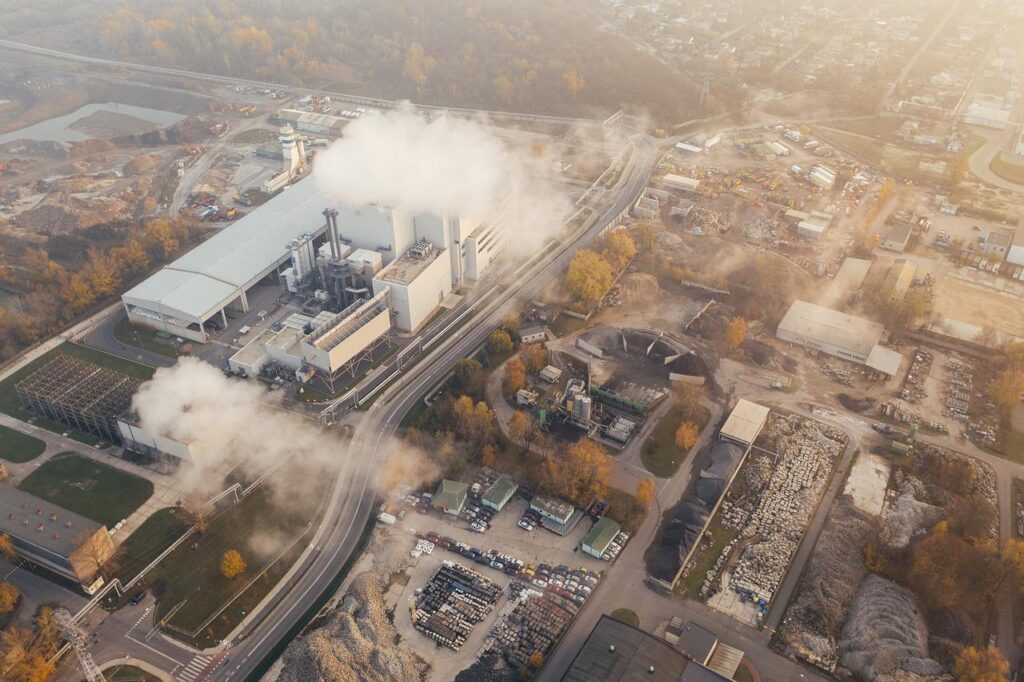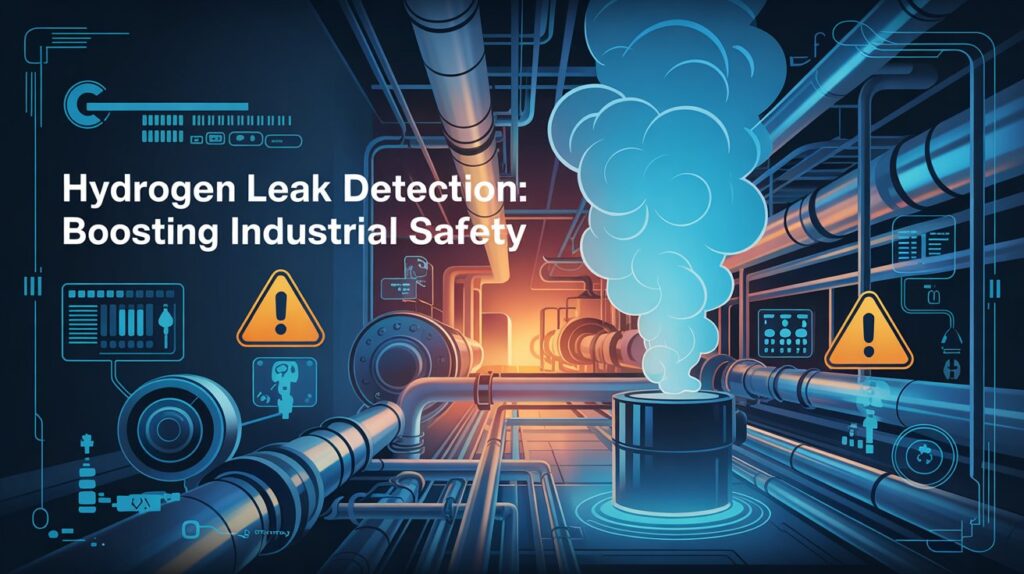Hydrogen is widely used in various industrial processes, but its flammability makes it a significant safety hazard. Even small leaks can lead to dangerous accidents, including explosions or fires. To mitigate these risks, hydrogen leak detection systems are crucial in monitoring and identifying leaks before they escalate. These systems provide real-time detection, enabling swift actions to prevent hazardous situations. In this blog post, we will explore how hydrogen leak detection systems work, their importance in improving safety, and their role in maintaining a safe, efficient industrial environment.

The Importance of Hydrogen Leak Detection
Hydrogen is colorless, odorless, and highly flammable, making it incredibly difficult to detect without specialized equipment. A small leak can go unnoticed for an extended period, allowing the gas to accumulate and increasing the risk of ignition. Hydrogen leak detection systems are designed to continuously monitor hydrogen concentrations in the air and detect even the smallest leaks.
Early detection is critical because it allows for immediate corrective actions to prevent dangerous situations. The importance of these systems extends beyond just preventing explosions; they also help avoid damage to equipment and mitigate the risk of toxic exposure in the workplace. In high-risk industries like oil refining or chemical manufacturing, the presence of hydrogen requires rigorous safety measures, and leak detection systems are a fundamental part of this infrastructure.
Advanced Detection Technologies
Modern hydrogen leak detection systems utilize advanced sensor technologies that are sensitive to the presence of hydrogen. These sensors that we can see here are typically based on either electrochemical, catalytic, or thermal conductivity methods, each offering different advantages depending on the application. Electrochemical sensors are widely used for their high sensitivity and fast response times, while catalytic sensors are effective in environments with high temperatures or pressures.
Thermal conductivity sensors are also popular, as they measure the difference in heat transfer between hydrogen and surrounding gases. These technologies work together to provide real-time monitoring, ensuring that any variations in hydrogen levels are detected and acted upon quickly. With advancements in sensor technology, detection systems have become more accurate, reliable, and capable of operating in challenging industrial environments.
Integration with Industrial Safety Systems
Hydrogen leak detection systems do not operate in isolation but are often integrated with other industrial safety systems. Many systems are connected to alarms and automatic shutdown mechanisms, which can activate safety protocols if a leak is detected. These safety measures may include shutting off valves, initiating ventilation systems, or activating fire suppression systems to mitigate the potential impact of a leak.
Integration with a plant’s broader safety infrastructure ensures a comprehensive response to hydrogen-related hazards. These systems are often linked to centralized monitoring platforms, allowing safety personnel to track leak data in real time and make informed decisions about the operation’s status. By automating responses to hydrogen leaks, businesses can reduce the human error factor and improve overall safety outcomes.
Compliance with Regulatory Standards
Industrial environments, especially those dealing with hazardous gases like hydrogen, are subject to strict safety regulations set by organizations such as OSHA (Occupational Safety and Health Administration), NFPA (National Fire Protection Association), and IEC (International Electrotechnical Commission). These regulations dictate the safety measures that must be implemented to protect workers and equipment from potential hazards.
Hydrogen leak detection systems help businesses meet these regulatory requirements by providing continuous monitoring and documentation of hydrogen levels. By adhering to these standards, companies improve safety and reduce the risk of legal liabilities and penalties. In the event of an incident, a personal injury attorney can help injured workers understand their rights, deal with the legal process, and pursue compensation if negligence or non-compliance played a role. Ensuring compliance with regulations is not only critical for operational integrity and reputation but also for protecting the legal interests of both employers and employees.
Minimizing Environmental Impact
Hydrogen leak detection systems also help mitigate the environmental impact of industrial operations. Hydrogen is a clean energy source when burned, but its release into the atmosphere, particularly in large quantities, can contribute to environmental pollution. Detecting and addressing hydrogen leaks promptly prevents excessive gas emissions that could harm the environment.
Hydrogen leaks that go undetected could cause equipment malfunctions or the need for more frequent repairs, further exacerbating the environmental footprint of industrial operations. By ensuring efficient hydrogen use and preventing unnecessary emissions, leak detection systems contribute to a more sustainable and eco-friendly industrial environment.
Cost Savings and Operational Efficiency
Beyond improving safety and compliance, hydrogen leak detection systems can lead to significant cost savings for businesses. The early detection of leaks can prevent costly downtime, expensive repairs, and the replacement of damaged equipment. In some industries, hydrogen is a valuable commodity, and any leakage can result in lost production or wasted resources.
By identifying and addressing leaks quickly, businesses can improve operational efficiency and reduce resource waste. The installation of reliable leak detection systems helps avoid catastrophic incidents, which can lead to costly legal settlements, insurance claims, and reputational damage. Investing in hydrogen leak detection systems improves safety and offers long-term financial benefits.

Hydrogen leak detection systems are vital for ensuring safety in industrial environments where hydrogen is used. By providing early detection of leaks, these systems help prevent dangerous incidents, protect personnel, and minimize environmental impact. Their integration with other safety protocols enhances efficiency and regulatory compliance while also offering cost savings by reducing downtime and resource waste. Investing in reliable leak detection technology is not just a safety measure but a strategic approach to maintaining a safe, sustainable, and economically efficient industrial operation.

